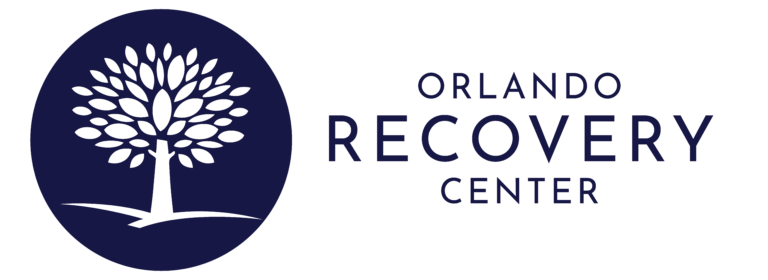A mental health disorder is a health condition that can affect the way a person thinks, feels and acts. People with mental health disorders experience significant distress and impairments in their functioning. A substance use disorder (SUD) is also a health condition that affects the brain. When someone has a SUD, it is very difficult to control the use of alcohol and/or drugs. As a result, they experience many impairments in their functioning. People can have both a mental health disorder and an SUD.
What Is a Co-Occurring Disorder?
A co-occurring disorder is when someone has been diagnosed with both a mental health disorder and a substance use disorder (SUD). It does not matter which disorder develops first. One disorder does not necessarily cause the other disorder to develop.
Co-occurring disorders can cause additional difficulties for people. Some things to consider include:
- Treatment is often more complicated.
- Symptoms may be more severe.
- Impairments in functioning may be greater.
- The prognosis may be longer than it would be with one diagnosis.
Signs and Symptoms of Co-Occurring Disorders
Co-occurring disorders present with the same signs and symptoms of at least one mental health disorder and at least one substance use disorder. Common signs and symptoms that can occur include:
Treatment Can Be Life Changing
Whether you are struggling with addiction, mental health or both, our expert team is here to guide you every step of the way. Don’t wait— reach out today to take the first step toward taking control of your life.
- Pulling away from family and friends
- Behavioral changes
- Trouble keeping up with daily activities and tasks
- Risky behaviors
- Not attending to personal hygiene and well-being
- Not having control over the amount or frequency of substance use
- Using drugs and alcohol under dangerous conditions
- Developing a tolerance to drugs or alcohol
- Experiencing withdrawal symptoms when not using drugs or alcohol
- Needing to use drugs or alcohol to function

Ready To Start Your Recovery?
Our Recovery Advocates are here to answer any questions, verify your insurance benefits, and find the best treatment path that fits your needs.
Statistics and Prevalence of Co-Occurring Disorders
Co-occurring disorders have high prevalence rates. Surveys of U.S. adults indicate that at least half of people who have a mental health diagnosis will also have a substance use disorder and vice versa. Less research has been conducted on rates among teenagers, but current data shows that more than 60% of teenagers receiving community-based treatment for substance use disorders also have a mental health diagnosis.
Unfortunately, not too few people receive treatment for co-occurring disorders. Statistics regarding treatment for co-occurring disorders show that:
- Half of people with co-occurring disorders do not receive any treatment.
- Around 35% only receive treatment for a mental health disorder.
- About 9% only receive treatment for a substance use disorder.
- Around 4% receive treatment for both a mental health disorder and a substance use disorder.
Addiction and Mental Health
A strong connection exists between substance use disorders (SUDs) and mental health disorders. Research has identified several reasons for this co-occurrence:
- Mental health disorders and SUDs have similar risk factors, which increases the likelihood of someone experiencing a mental health disorder and a substance use disorder. Some of these risk factors are genetics, environmental factors and the impacts of stress and trauma.
- People with mental health disorders often use drugs or alcohol to self-medicate their distressing symptoms.
- Substance use may lead to changes in brain chemistry that can lead to the development of a mental health disorder.
Depressive Disorders
Depression is a type of mental health disorder that affects someone’s mood. With depression, people usually have an overwhelming feeling of sorrow and have trouble keeping up with the demands of life. They may even feel like life is not worth living. Some of the symptoms of depression are:
- A depressed mood
- Loss of interest or enjoyment in activities
- Changes in appetite or weight
- Changes in sleep patterns (sleeping too much or trouble sleeping)
- Moving too much or not moving enough
- Fatigue
- Feeling worthless or feeling inappropriate guilt
- Poor concentration
- Trouble making decisions
- Thinking about death, suicidal thoughts, planning or attempting suicide
Substance abuse can intensify symptoms of depression. When people have depression and a substance use disorder, they are more likely to have:
- More severe mood swings
- Higher risk of suicidal ideation and suicide attempts
- Less ability to function on a daily basis
There is a strong prevalence of co-occurring SUDs and depression. People with depression are:
- 20% more likely to have any substance use disorder
- 17% more likely to have an alcohol use disorder
- 8% more likely to have a drug use disorder
Anxiety Disorders
When someone has an anxiety disorder, they experience excessive fears that are usually irrational. They feel like something or someone is a threat when there is likely no danger at all. They may avoid whatever it is or whoever it is they fear. Generalized anxiety disorder (GAD) and panic disorder have the highest rates of co-occurrence with substance use disorder.
Some of the symptoms of GAD include:
- Frequent and excessive worry
- Trouble controlling the worry
- Feeling restless or on edge
- Fatigue
- Poor concentration or feeling like the mind is blank
- Irritable
- Tense and sore muscles
- Poor sleep (trouble falling asleep or staying asleep)
When anxiety and SUD co-occur, people have more severe symptoms and tend not to do as well in treatment. They are more likely to have:
- More disabilities related to their symptoms
- More frequent hospitalizations and doctor visits
- Lower functioning
- Poorer quality of life
- Higher rates of suicide
Anxiety disorders and SUDs co-occur quite frequently:
- There is a 28% co-occurrence rate of panic disorder and SUD.
- People with a drug use disorder are 1.3 times more likely to have an anxiety disorder.
Panic Disorder
With panic disorder, people experience repeated panic attacks. Panic attacks occur very quickly without warning, and they involve discomfort or a very intense fearful state. With a panic attack, people can experience:
- Heart palpitations, pounding or rapid heart rate
- Sweats
- Shakiness or trembles
- Feeling short of breath
- Choking sensations
- Pain in the chest
- Upset stomach
- Nausea
- Dizziness or lightheadedness
- Feeling chills or extremely hot
- Feelings of numbness or tingling
- Feeling disconnected from reality
- Feeling detached from the self or body
- Feeling scared of being out of control
- Feeling scared of dying
Schizophrenia
Schizophrenia is a type of mental health disorder characterized by psychosis. When someone has schizophrenia, they have distorted thoughts and perceptions of reality. They often have odd or bizarre behaviors and impaired communication. They may also have distorted emotions and sense of self.
Some common symptoms of schizophrenia include:
- Delusions
- Hallucinations
- Disorganized speech
- Disorganized behavior
- Catatonic behavior
- Lack of emotional expressions
- Minimal speech or communication
- Lack of pleasure
- Lack of motivation
- Withdrawing from others
When people with schizophrenia misuse substances, they are more likely to have severe symptoms and poor compliance with their medications. This co-occurrence also increases the likelihood of:
- Dying early
- Problematic health issues
- Violent behaviors
- Being a victim of abuse, neglect or violence
- Suicide
- Financial and legal problems
- Relationship problems
There is a high prevalence of schizophrenia and substance misuse (alcohol, most commonly). People with schizophrenia have:
- A 55% lifetime prevalence of having an SUD
- Four times more risk for excessive alcohol use
- 3.5 times more risk for excessive cannabis use
- 4.6 times more risk for excessive recreational drug use
Attention Deficit Hyperactivity Disorder (ADHD)
ADHD is a common mental health disorder that affects adults and children. It can present differently for adults than it does for children. There are two primary types of ADHD, and a person can show symptoms of one or both.
Some of the symptoms with the inattentive type include:
- Not paying close attention to details
- Making careless mistakes
- Trouble paying attention to things
- Appearing to not be listening
- Not completing tasks or following directions
- Trouble staying organized
- Not wanting to work on things that require attention and focus
- Losing things
- Being easily distracted
- Forgetfulness
Some of the symptoms of ADHD with hyperactivity and impulsivity are:
- Fidgeting
- Trouble remaining seated
- Moving around or climbing
- Restlessness
- Trouble engaging in activities quietly
- Inability to sit still for long periods of time
- Talking a lot
- Interrupting others
- Having a hard time waiting
- Answering questions before it is appropriate
When people with ADHD have an SUD, they are more likely to have:
- More severe symptoms of both disorders
- Poor compliance with treatment
- Addiction issues at a younger age
- More difficulty abstaining from substances.
- Higher rates of hospitalizations and suicide.
There is a high rate of co-occurring SUDs and ADHD:
- Prevalence of 23%
- These individuals are most likely to use cannabis, alcohol, nicotine or cocaine
Mood Disorders
Mood disorders cause mood fluctuations that lead to difficulty in functioning. Bipolar disorder is a mood disorder where someone experiences extreme highs in mood (mania) and extreme lows in mood (depression).
People must have experienced at least one manic episode in order to have a diagnosis of bipolar disorder. A manic episode can include:
- Elevated or irritable mood
- High levels of energy and activity
- Inflated sense of self-esteem
- Grandiose thoughts
- Feeling rested with only a few hours of sleep
- Excessive talking
- Pressured speech
- Being easily distracted
- Psychomotor agitation
- Increased risk-taking behaviors or activities
Co-occurrence of bipolar disorder and SUD results in more severe symptoms, low compliance with treatment and poor treatment outcomes. People with these conditions are also more likely to have:
- Increased ER visits
- More hospitalizations
- Higher suicide rates
- Decreased response to medications
There are extremely high prevalence rates for SUDs with bipolar disorder. People with bipolar disorder have a lifetime prevalence of:
- 65% for any SUD
- 54% for an alcohol use disorder
- 32% for a drug use disorder
Post-Traumatic Stress Disorder (PTSD)
PTSD is a chronic mental health disorder that involves a persistent and prolonged stress response to a traumatic event. It can last for years after the traumatic event. PTSD involves an exposure to either an actual or threat of death, serious injury or sexual violence. After the event, the person experiences intrusive symptoms such as:
- Upsetting memories of the event
- Dreams related to the event
- Feeling like the event is happening again
- Psychological or physiological distress when exposed to stimuli that seem similar to some part of the event
With PTSD, people avoid stimuli that remind them of the event. They experience negative changes in their moods and thoughts related to the event, and they have changes in how they respond and react to the event.
People who have PTSD and an SUD typically do not do as well in treatment. They can often have poorer compliance, have higher suicide rates and relapse more quickly. They also tend to have more cognitive problems and trouble with their social functions. They more frequently misuse cocaine, opioids, prescription drugs, cannabis and alcohol.
Research shows a range of prevalence rates with PTSD and SUDs:
- People with SUDs have a lifetime prevalence rate of PTSD between 26% to 52%.
- People with PTSD have a lifetime prevalence rate of SUDs between 36% to 52%.
Diagnosing Co-Occurring Disorders
The diagnosis of co-occurring disorders is a complicated process. The symptoms of a mental health disorder and an SUD can have similarities, making it hard to figure out which symptoms stem from the mental health diagnosis and which symptoms stem from the SUD. Another complication is that some substance-related symptoms (withdrawal and intoxication) can look similar to or alter the presentation of mental health symptoms.
For a more accurate diagnosis, it is important that people who initially present for substance abuse treatment receive a follow-up assessment for mental health after abstaining from drugs and alcohol for at least one month.
To get the most clear and accurate diagnosis, providers should use comprehensive assessment protocols. As part of the assessment process, mental health providers should obtain a substance abuse history from all new clients. Substance abuse providers should also obtain a mental health history from new clients.
When undergoing a substance abuse screening, people should expect to undergo screening tests related to:
- Substance abuse symptoms
- Assessment of severity
- Denial
- Testing of hair, saliva or urine
During a mental health screening, providers will likely address:
- Safety (suicide, violence, self-care)
- Mental health symptoms (past and present)
- Trauma exposure (past and present)
- Mental status exam
Integrated Treatment Therapy for Co-Occurring Disorders
The Substance Abuse and Mental Health Services Administration (SAMHSA) recommends integrated treatment, also called dual diagnosis care, as the most effective way to treat co-occurring disorders. With integrated treatment, people can learn to manage their mental health symptoms and work on sobriety.
Integrated treatment occurs when:
- Treatment addresses more than one disorder
- Treatment combines multiple types of therapies
- One treatment plan addresses each diagnosis
SAMHSA recommends integrated treatment because it offers many advantages to other forms of treatment when addressing co-occurring disorders. While engaging in integrated treatment:
- Treatment addresses symptoms of the SUD and mental health disorder with one treatment team.
- People have fewer barriers to treatment, so they are more likely to remain connected with their treatment team and have greater follow-through in treatment.
- One treatment team works together, which offers more unified support during the treatment process.
- People experience greater symptom management and improvement for both mental health and substance abuse symptoms.
- The care typically costs less.
- Integrated care typically results in a greater likelihood of recovery from both mental health and substance use disorders.
Integrated treatment plans combine different forms of psychotherapy, behavior therapy and medication management. Some of the common therapies include:
- Cognitive behavioral therapy (CBT)
- Dialectical behavioral therapy (DBT)
- Assertive community treatment (ACT)
- Therapeutic communities (TC)
- Contingency management (CM)
Substance abuse treatment services occur across different levels of care. Each level of care can incorporate integrated treatment for people who have co-occurring disorders. The different levels of care include:
- Medical detox
- Inpatient rehab
- Outpatient treatment
- Partial hospitalization program
- Intensive outpatient program
- Aftercare
FAQs About Co-Occurring Disorders
What exactly is meant by the term “mental health?”
“Mental health” is a term that encompasses every aspect of a person’s well-being: emotional health, social welfare and psychological health. Mental health impacts how a person thinks, behaves and feels. It can determine how people interact with other people, choose to respond to stressors and live their lives. From childhood, mental health and wellness deeply affect a person’s choices and development. There can be signs from very early on that someone is experiencing mental health symptoms.
Many different treatment services can treat mental health symptoms. Early identification of symptoms and treatment are recommended to minimize the negative long-term consequences of untreated mental health symptoms.
Is there a difference between “co-occurring disorders” and “dual diagnosis?”
There are a number of different terms used to describe someone who is struggling with both a substance use disorder and a mental health disorder. In some cases, these terms are meant to highlight a specific mental health issue or identify which disorder is believed to be the primary problem for the patient. The terms “co-occurring disorders” and “dual diagnosis” are interchangeable. Here is a list of other frequent terms used to describe someone who is living with a mental health disorder and a substance use disorder:
- Comorbid disorders
- Dually diagnosed or dually disordered
- Mentally ill chemically dependent (MICD)
- Mentally ill substance abuser (MISA)
- Mentally ill chemical abuser (MICA)
- Mentally ill substance using (MISU)
- Substance-abusing mentally ill (SAMI)
- Chemically abusing (or addicted) mentally ill (CAMI)
- Individuals with co-occurring psychiatric and substance disorders (ICOPSD)
Why do mental health disorders develop?
There is no one particular cause for any mental health disorder. In most cases, it is a combination of events and situations that contribute to the development of symptoms. Some possible contributing factors to the development of mental health disorders include:
- Distressful life experiences, such as trauma or abuse
- Chronic medical conditions
- Biology
- Alcohol and drugs
- Feeling lonely or isolated
Can substance abuse cause a mental health condition?
Substance abuse can contribute to the development of a mental health disorder and can worsen a current mental health issue. The National Center for Biotechnology Information (NCBI) says that these substances may cause mental health issues:
- Alcohol
- Caffeine
- Nicotine
- Cocaine
- Amphetamines
- Sedatives
- Hallucinogens
- Opiates
Additionally, SAMHSA reports that these mental health disorders can be caused or worsened by substance abuse:
- Persisting dementia
- Delirium
- Persisting amnestic disorder
- Sleep disorder
- Psychotic disorder
- Mood disorder
- Perceptual disorder
- Sexual dysfunction
- Anxiety disorder
Who is qualified to diagnose a co-occurring disorder?
- Licensed mental health professionals
- Psychiatrists
- Medical doctor
What added difficulties are there in treating multiple issues at the same time?
Treating two or more disorders at the same time presents many challenges to the provider, the individual and any family members involved. Some common treatment challenges include:
- Poor treatment compliance
- Lower remission rates
- Denial of need for treatment
- Worse treatment outcomes
- Low retention rates in treatment
- Obtaining a clear diagnostic understanding
- Difficulty maintaining abstinence from drugs and alcohol
- More severe symptoms for each disorder
Where do people seek treatment for a co-occurring disorder?
SAMHSA recommends that people with co-occurring disorders receive integrated treatment for the most effective results. Many mental health treatment centers and substance abuse treatment centers offer integrated treatment options. The process should begin with a thorough assessment and evaluation followed by an integrated treatment plan individualized for the appropriate level of care (detox, inpatient or outpatient).
Is mental illness something that can be cured?
Mental health disorders cannot be cured. With treatment, however, people can learn to manage their mental health symptoms and begin to live a more satisfying life. Treatment usually involves a combination of therapy and medication.
How do medications help treat a mental health disorder?
Medications help to treat the symptoms of a mental health disorder. Some people take medications for a short period, while others take them for a longer amount of time to manage their symptoms.
There are many different medications available to treat symptoms of mental health disorders. People respond differently to the medications, so it may take some time to find the most effective medication and doses for each individual. Factors that will affect this process include:
- The specifics of the mental health disorder and symptoms experienced by the patient
- Gender, age and physiology of the patient
- Use of other medications and supplements being taken to address medical issues
- Existence of other medical disorders and symptoms
- Genetics
- Functionality of the liver and kidneys
- Diet
- Whether or not the patient adheres to the medication dosage and schedule
- Use of substances, including alcohol, cigarettes and others
Can you die from a mental health issue?
People do not die from mental health disorders; however, people do die from the effects of their symptoms and issues related to the disorder. Some of these symptoms and issues that can result in death include:
- Suicide
- Complications from an eating disorder
- Effects of drugs or alcohol
- Risk-taking behaviors
What is the history of treating mental health disorders?
Mental health has a long and complicated history. People have tried to explain symptoms and find successful treatment for many centuries. Some explanations, movements and treatments have been very influential over time:
- 400 BC: Hippocrates identifies mental health issues as diseases that can be treated physiologically. This view challenged previous beliefs that the person had angered the gods or was possessed by demons.
- Middle Ages: Muslim Arabs built asylums for people with mental health issues and began to approach mental health with scientific explanations.
- 407: Facilities were likely designated for the treatment of mental health in Spain.
- 1400s: Many hospitals and asylums were built and became a routine form of treatment and housing for people with mental health disorders
- 1600s: Mental health patients are frequently housed with criminals and people with disabilities. They were often abused and treated poorly.
- Late 1700s: Reforms in the treatment of mental health patients begin in some parts of Europe.
- 1840s: Dorothea Dix works to reveal the treatment conditions and poor housing for mentally ill people. Her work led to the establishment of state hospitals specifically for people with mental health disorders.
- 1900s: Sigmund Freud began treating hysteria with hypnosis. This treatment led to the development of psychoanalysis.
- Early 20th century: Medication, surgery and electroconvulsive therapy are utilized to treat patients living with mental health symptoms.
- 1946: The National Mental Health Act is signed by President Harry Truman. It created the National Institute of Mental Health (NIMH).
- 1949: Lithium is used to treat psychosis. NIMH officially opens its doors.
- 1950s: Antipsychotics are utilized to help manage symptoms of psychosis. Behavioral therapy is developed.
- 1960s: Many patients are released from mental health facilities. Some do well due to the use of antipsychotics, while others end up homeless due to a lack of care. The Mental Retardation Facilities and Community Mental Health Centers Construction Act is passed to establish federal funding for community-based mental health treatment services.
- 1990s: A new batch of antipsychotic medications is implemented in treatment and proves to be even more effective in the treatment of schizophrenia.
Finding Treatment for Co-Occurring Disorders in Orlando, FL
If you or someone you love is experiencing symptoms of drug or alcohol addiction and a co-occurring mental health disorder, the Orlando Recovery Center can help. We offer a full continuum of care with integrated treatment options that can address substance abuse and mental health symptoms. Contact us today to learn more about dual diagnosis treatment programs that can work well for your situation.
Explore Treatment At Orlando Recovery Center
Our full range of treatment options and personalized treatment plans ensure every client gets expert care that meets their needs.



